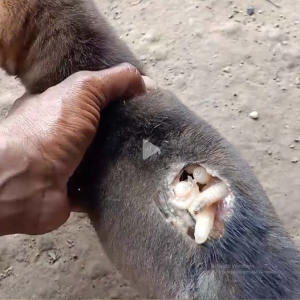This week, we bid farewell to one of Africa’s true icons, Tolstoy, a majestic elephant born near Mount Kilimanjaro in 1971.
Throughout his remarkable life, Tolstoy roamed the Amboseli environment, embodying the strength and beauty of Africa’s wildlife.

Despite facing challenges like poaching, droughts, habitat loss, and human expansion, Tolstoy stood resilient as one of the last great tuskers on the continent.
Tragically, around six weeks ago, Tolstoy sustained a spear wound on his front leg, suspected to be from a farmer protecting crops from wildlife.

Despite initial treatment and close monitoring by the Big Life Rangers, Tolstoy’s condition deteriorated.
On April 27, he was found weak in Kimana Sanctuary, prompting the immediate dispatch of the SWT/KWS Mobile Vet Unit for assistance.
A seven-hour-long rescue operation ensued, involving veterinarians, rangers, and pilots working tirelessly to save Tolstoy.

Despite their best efforts, Tolstoy, displaying remarkable resilience, could not fully recover.
In the end, surrounded by those who fought for him, Tolstoy took his last breath, leaving a legacy beyond his lifetime.
Tolstoy’s passing serves as a poignant reminder of the human impact on the environment, particularly the growing issue of human-wildlife conflict.

The incident underscores the urgent need for practical solutions to preserve natural habitats and mitigate conflicts between humans and wildlife.
While Tolstoy’s departure is a profound loss, there is hope in the inspiration it has sparked. It serves as a call to action for conservation efforts, encouraging people to address the challenges that led to his untimely demise.
Tolstoy’s legacy, carried by the generations he likely fathered, ensures that the spirit of this magnificent tusker will live on in Amboseli and beyond.







